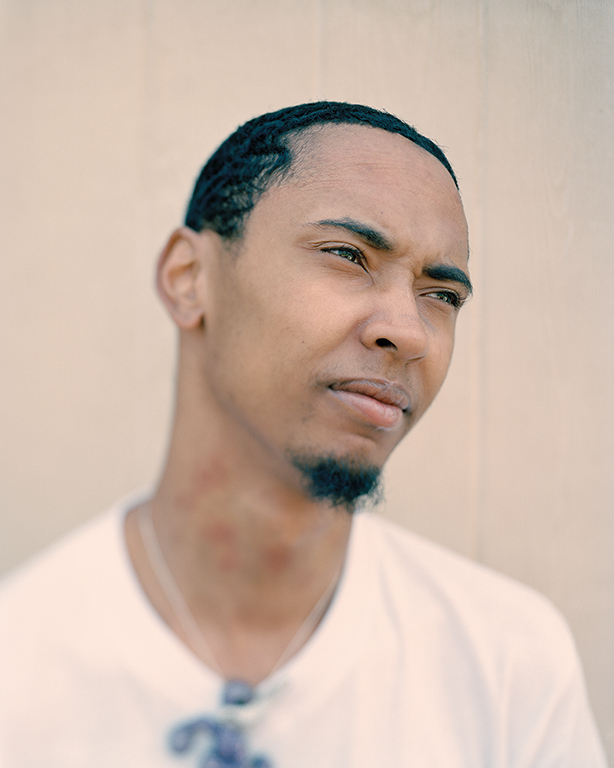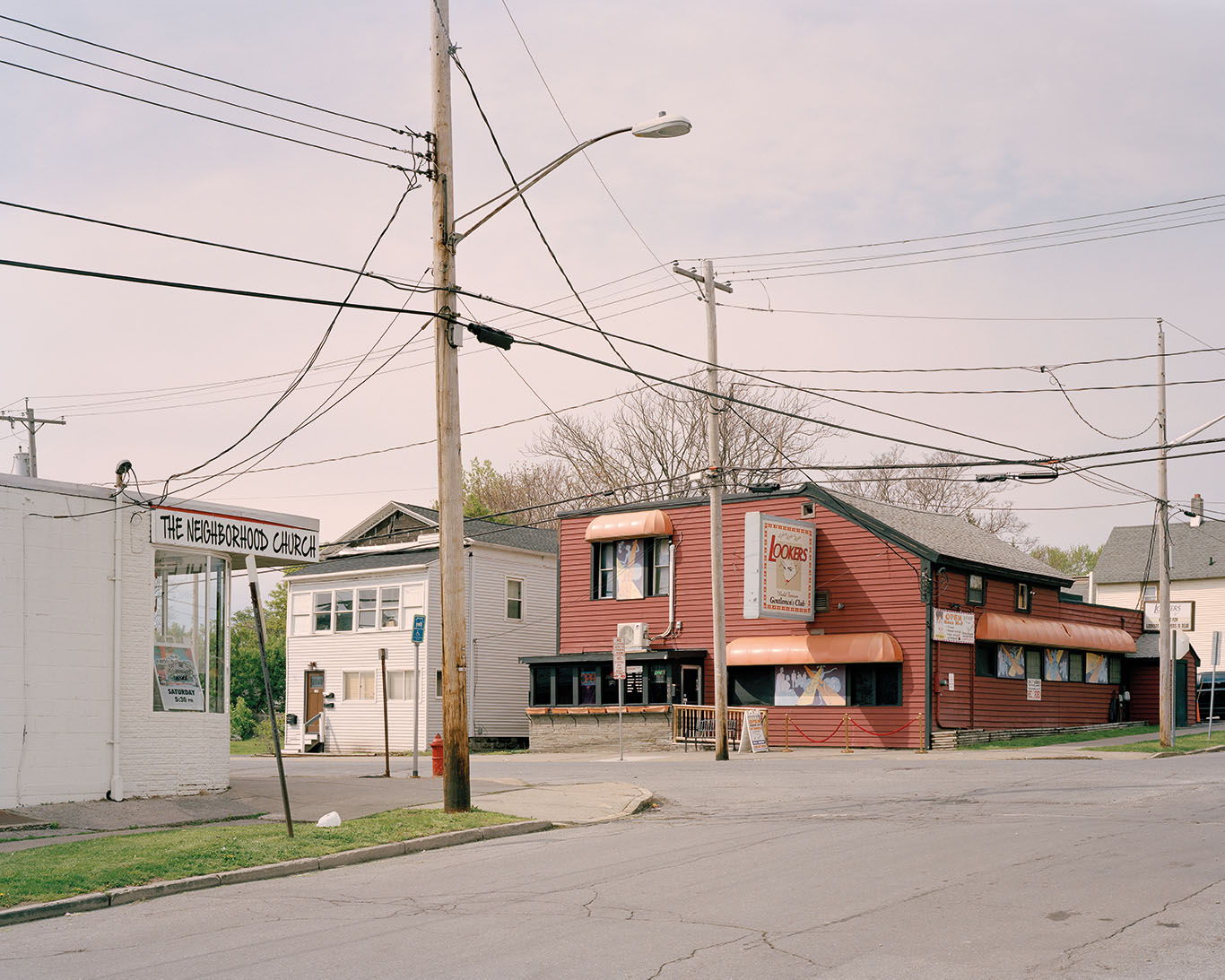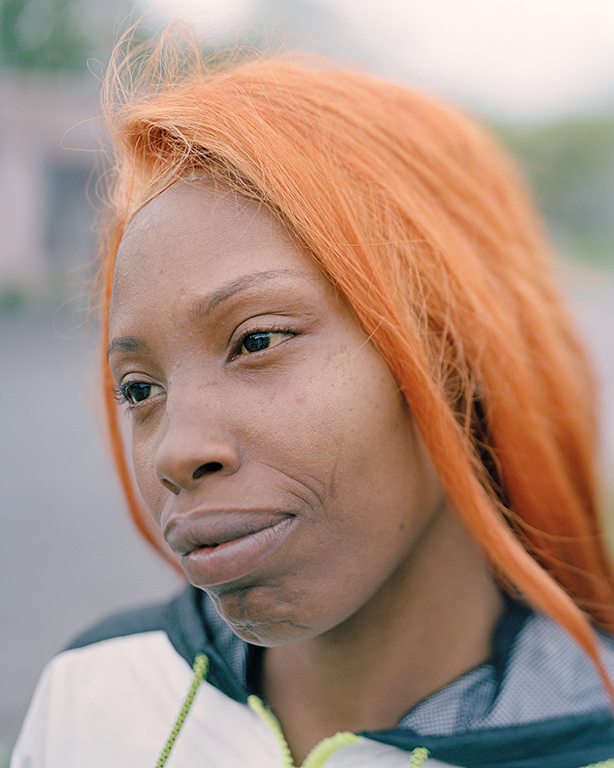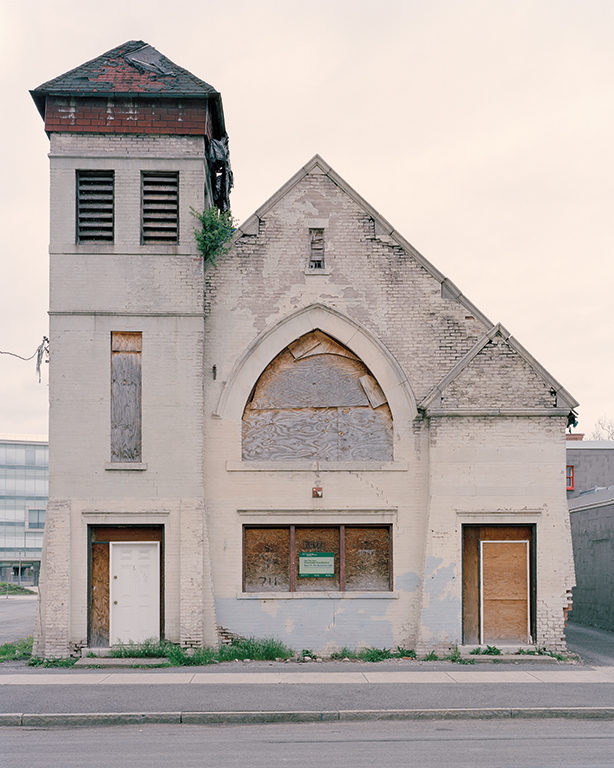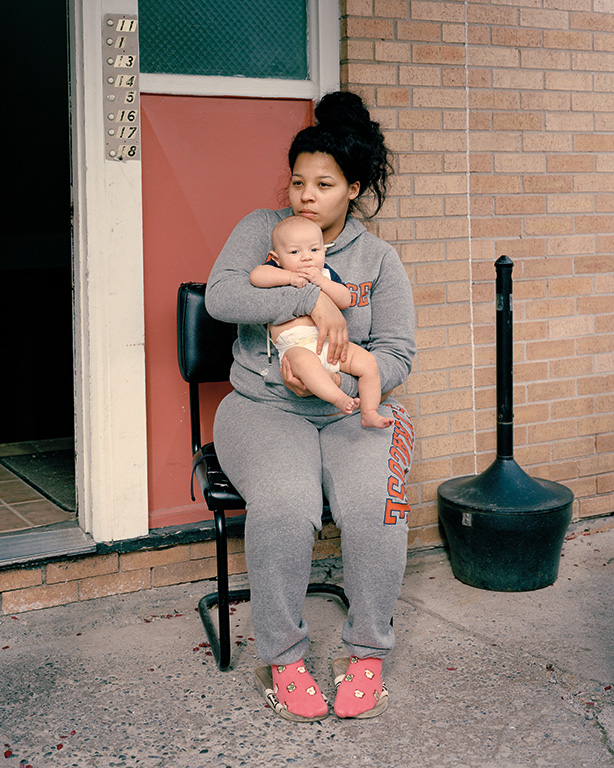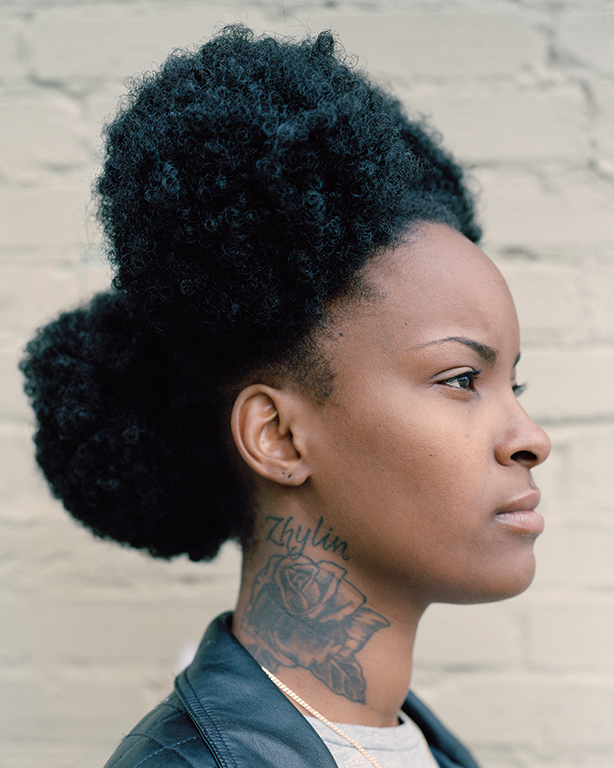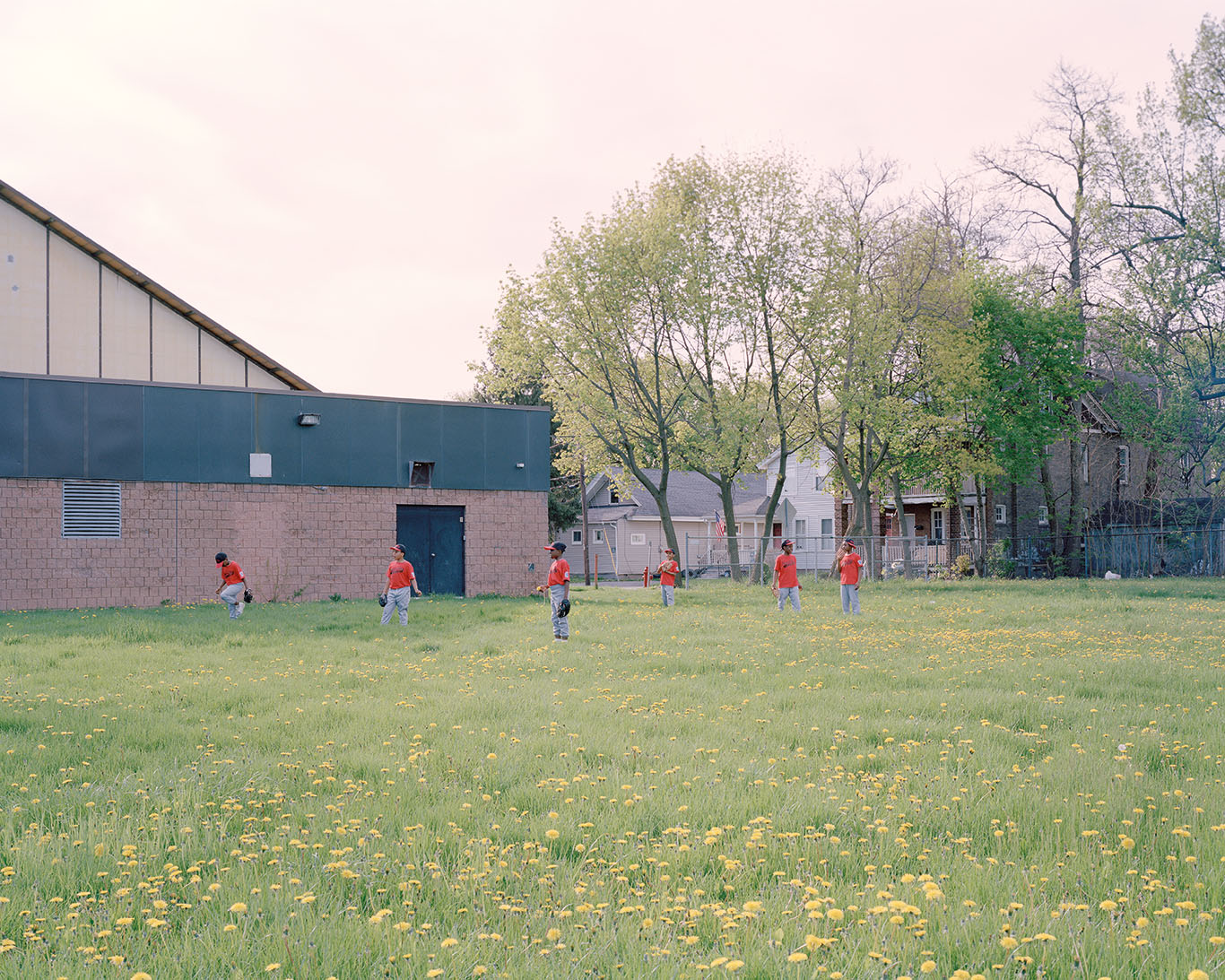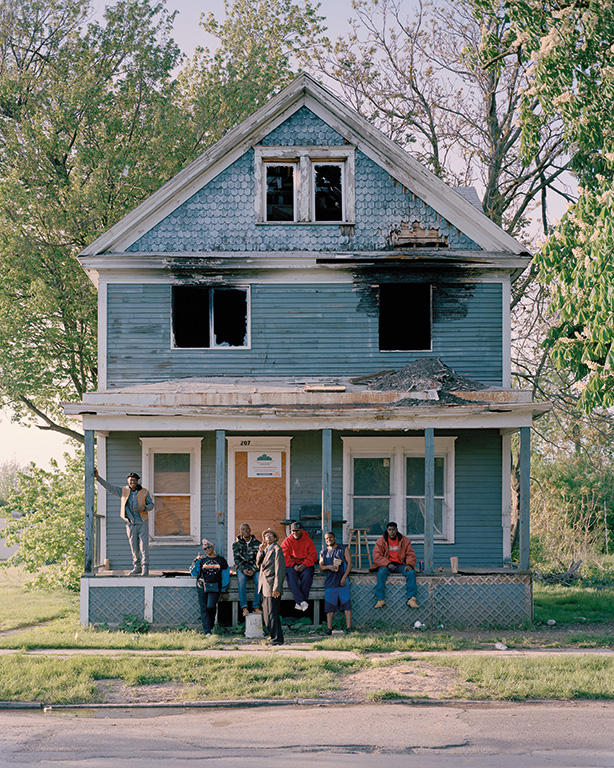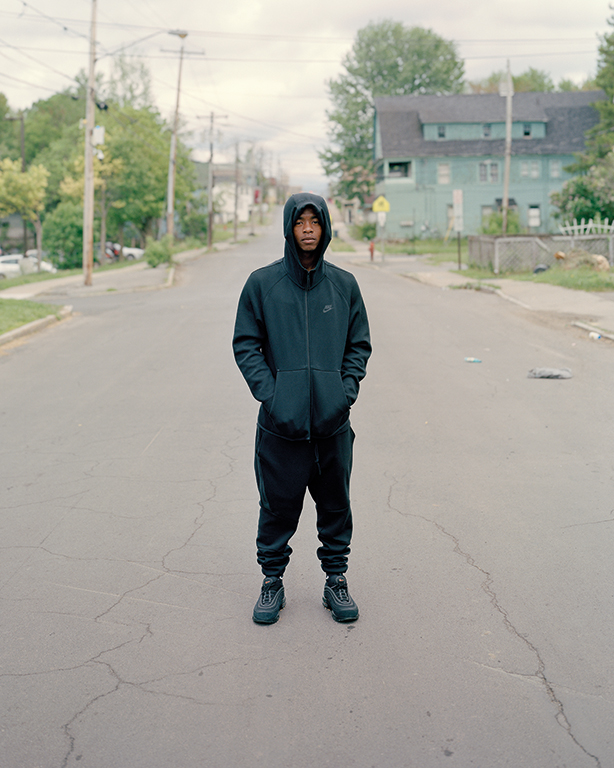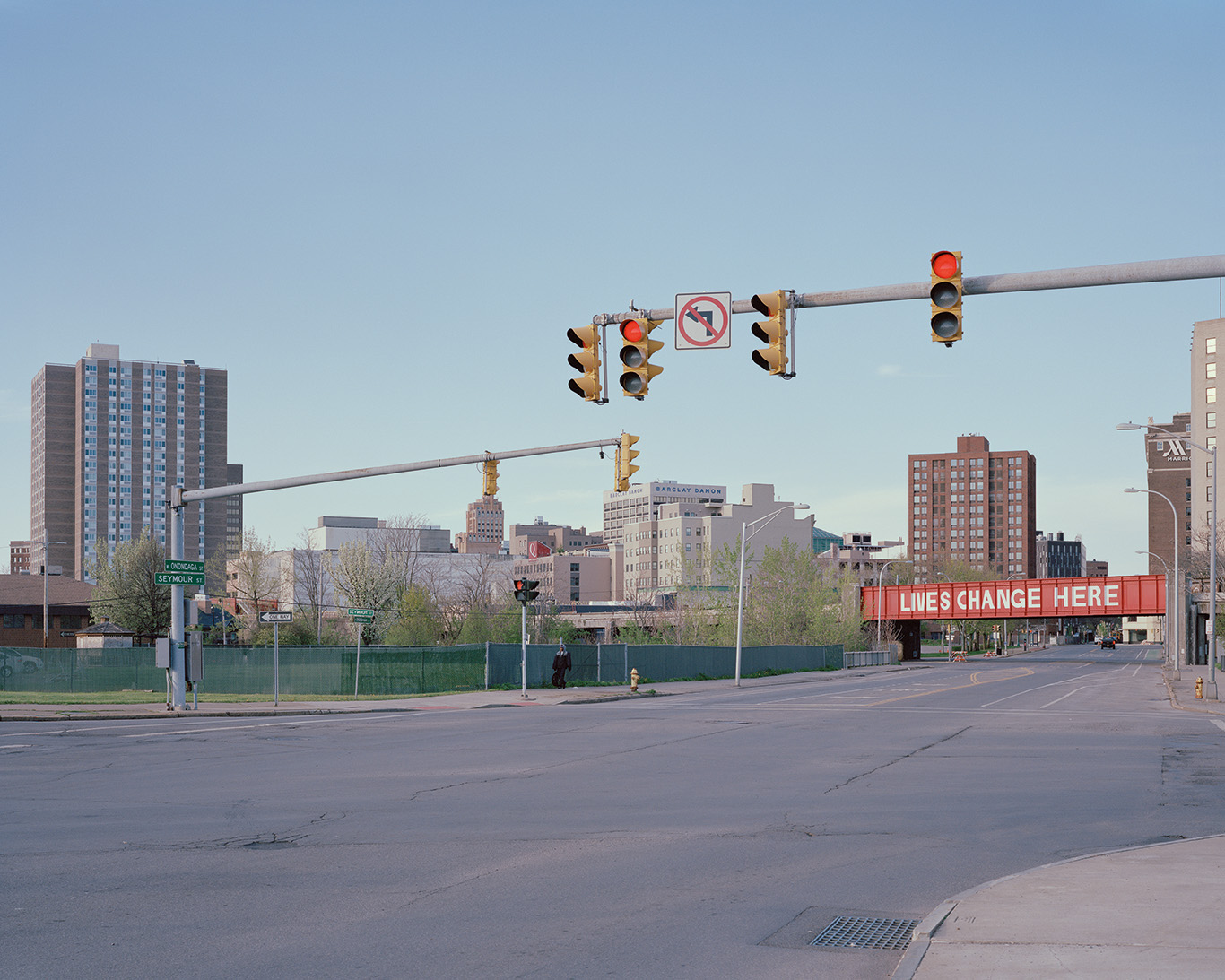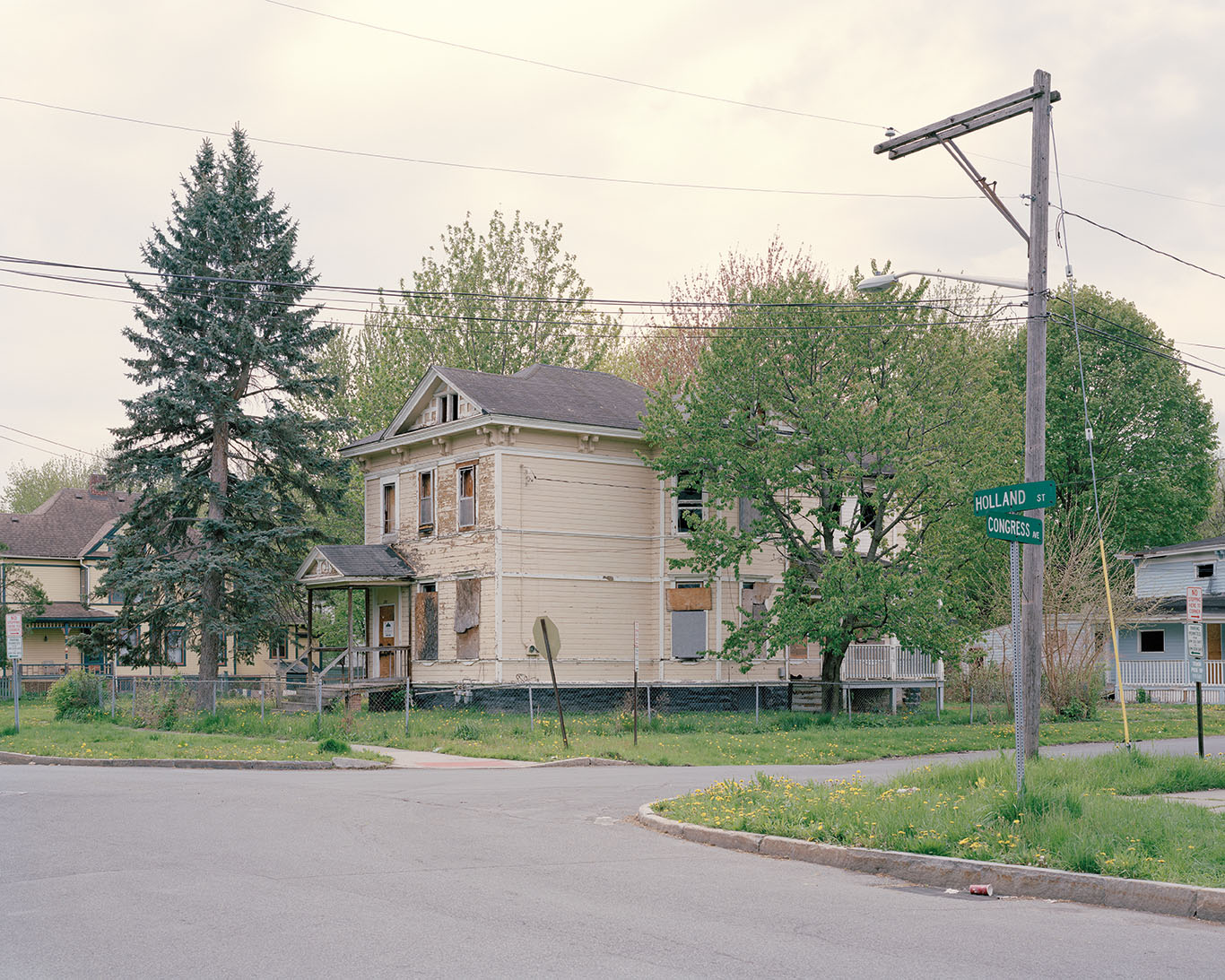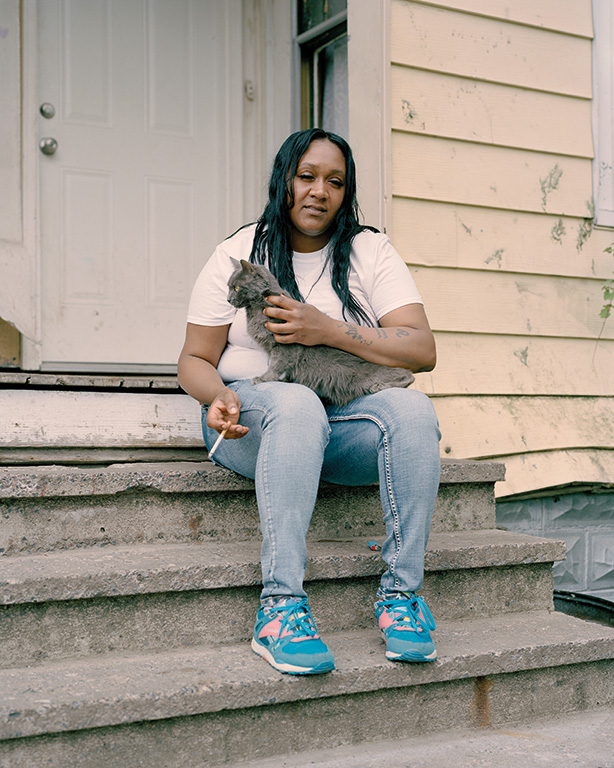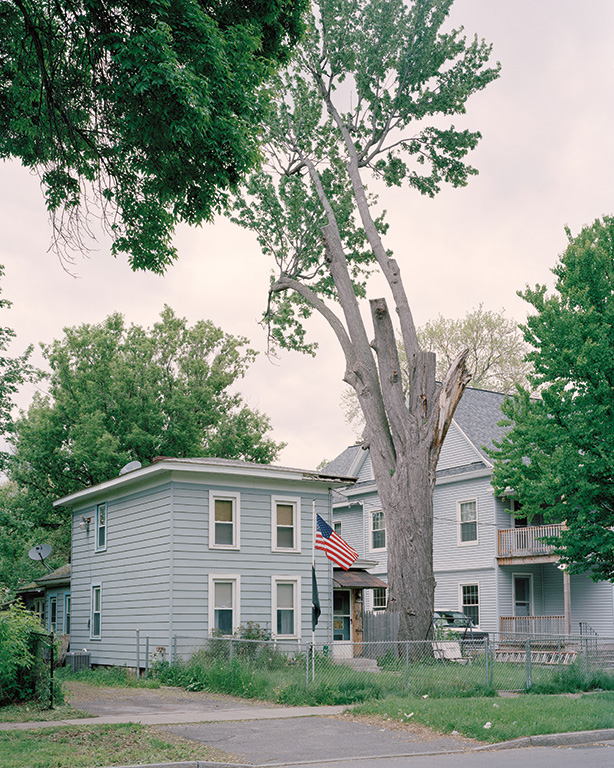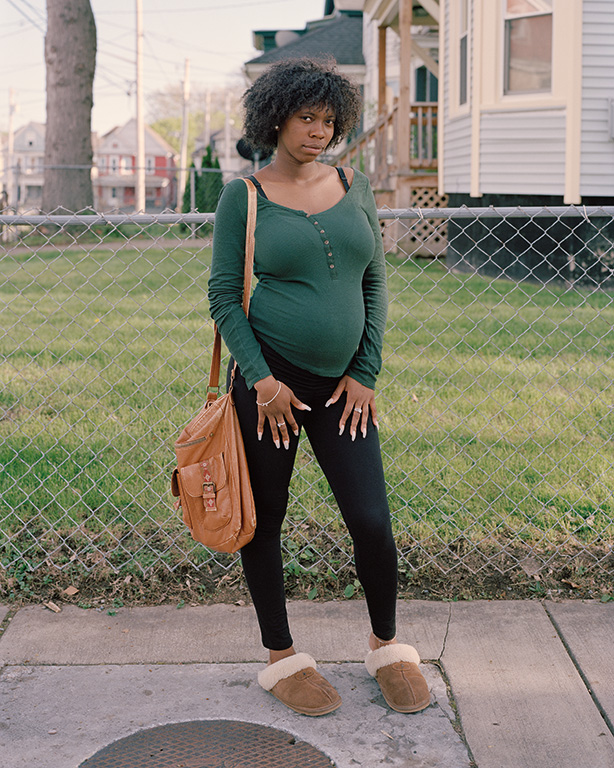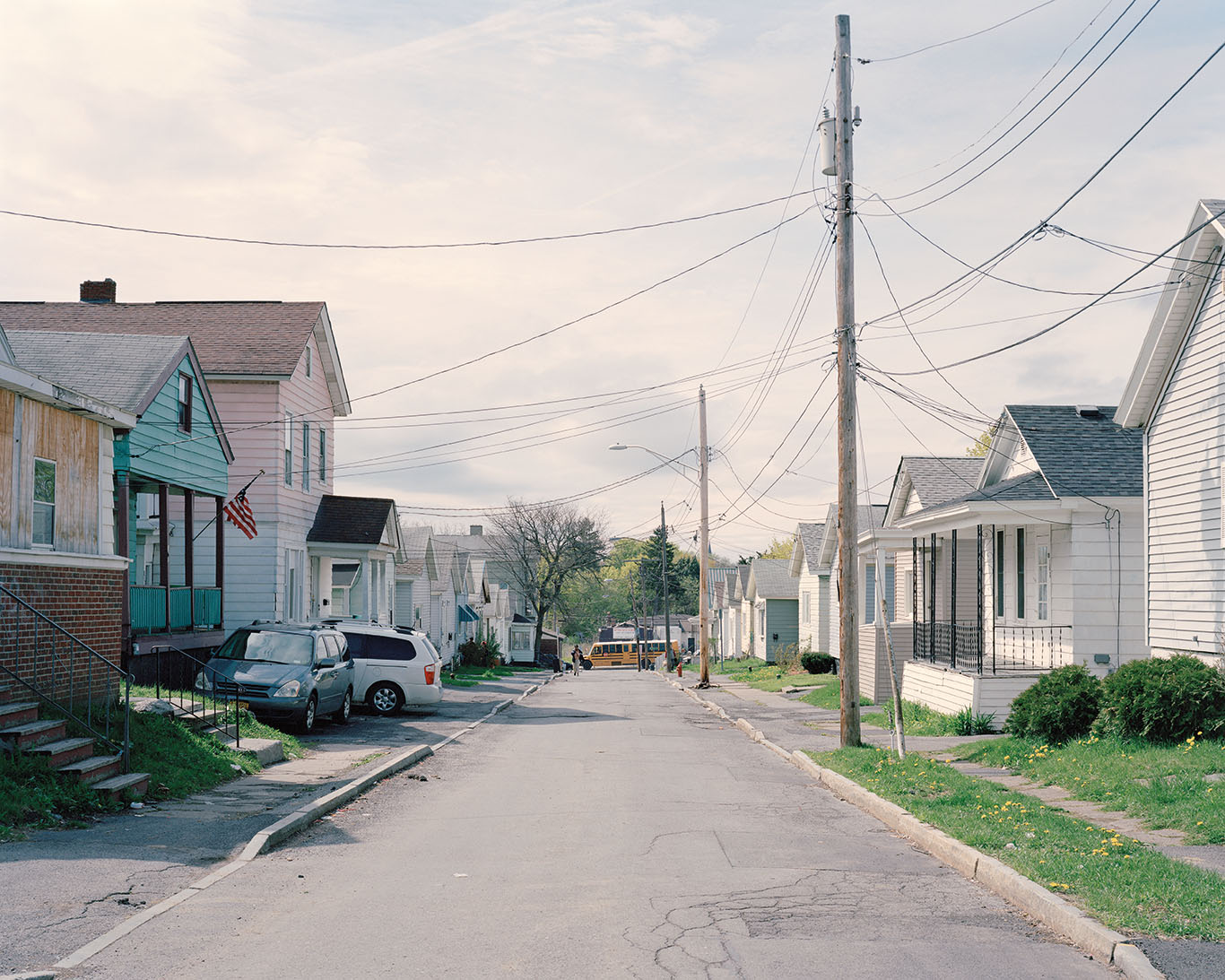In his book The Promised Land: The Great Black Migration and How It Changed America (1991), Nicholas Lemann describes a Southern rural landscape pockmarked by abandoned shacks. The mechanisation of cotton picking made some sharecroppers redundant, and many were unceremoniously forced from their homes. Elsewhere African Americans fled the South’s racial tyranny seeking better wages and more dignity in the North, often at night, taking only what they could carry and leaving the rest where it stood.
‘The Delta today is dotted with nearly spectral sharecropper cabins,’ writes Nicholas Lemann. ‘Their doors and windows gone, their interior walls lined with newspapers from the 1930s and 1940s that once served as insulation.’
Cian Oba-Smith’s photographs of Syracuse’s 15th Ward convey an analogous racial landscape almost a century later. Haunting scenes of dereliction and desertion: charred shells of houses, boarded up places of business and worship, long grass and empty lots underpinned by almost total segregation. Only this time it wasn’t people who left but capital, taking its jobs, infrastructure and opportunities with it and leaving those who remain to insist on their humanity and salvage what they can of their community. Herein lies the resilience that stands in contrast to and defiance of the desolation: babies are born, flags are flown, ball is played. Life goes on.
These pictures capture a bleak historical symmetry because we can assume many of the people Oba-Smith portrays in this decaying urban environment are the descendants of the sharecroppers who escaped those spectral, rural cabins generations ago. As such they are living testimony to James Baldwin’s assertion that the only difference between the North and the South was that ‘. . . the North promised more. And [there was only] this similarity: what it promised it did not give and what it gave, at length and grudgingly with one hand, it took back with the other.’
In 1950, when Syracuse was at its population peak of 221,000, just 2 per cent of its inhabitants were Black. As the city shrank, its Black population grew exponentially. Syracuse today has just two-thirds of the inhabitants it once had: some 146,103, almost a third of whom are African Americans. For much of that time they were primarily confined to the 15th Ward, thanks to Jim Crow’s kissing-cousin redlining, whereby Black people were confined to certain areas of a city because banks refused to lend them the money so they could buy elsewhere.
For a while the presence of Black people and the presence of capital coincided, providing skilled work and the economic basis for a culture and community to thrive, albeit within its enforced racialised borders. As the economy declined African Americans became a larger part of a shrinking and impoverished city. The steel mills closed while heavy industry like Rockwell International, General Electric and the Carrier Corporation moved either to the American South or Asia, where labour was cheaper and unions were weaker.
Through Oba-Smith’s lens we witness the lived consequences of the combined impact of liberalised global trade, deindustrialisation, the legacies of slavery, segregation and municipal racial codes: a separate and highly unequal reality for African Americans, denied the education, training, investment or infrastructure to meaningfully compete in the modern economy. Of America’s hundred largest metropolitan areas Syracuse has the highest rate of extreme poverty concentrated among Black and Hispanic residents, according to one Rutgers study, and the highest level of child poverty among cities of over 100,000 people. ‘Within a large, diverse and highly mobile post-industrial society,’ argue Douglas Massey and Nancy Denton in their landmark book, American Apartheid: Segregation and the Making of the Underclass, ‘Blacks living in the heart of the ghetto are among the most isolated people on Earth.’
The isolation Oba-Smith depicts is primarily collective. The blur of cars on Interstate 81 takes people through and over past Ward 15, much of which was cleared to make way for the motorway, but not to it. The red lines were drawn not only to keep the Black community in, but also to keep resources and other people out.

